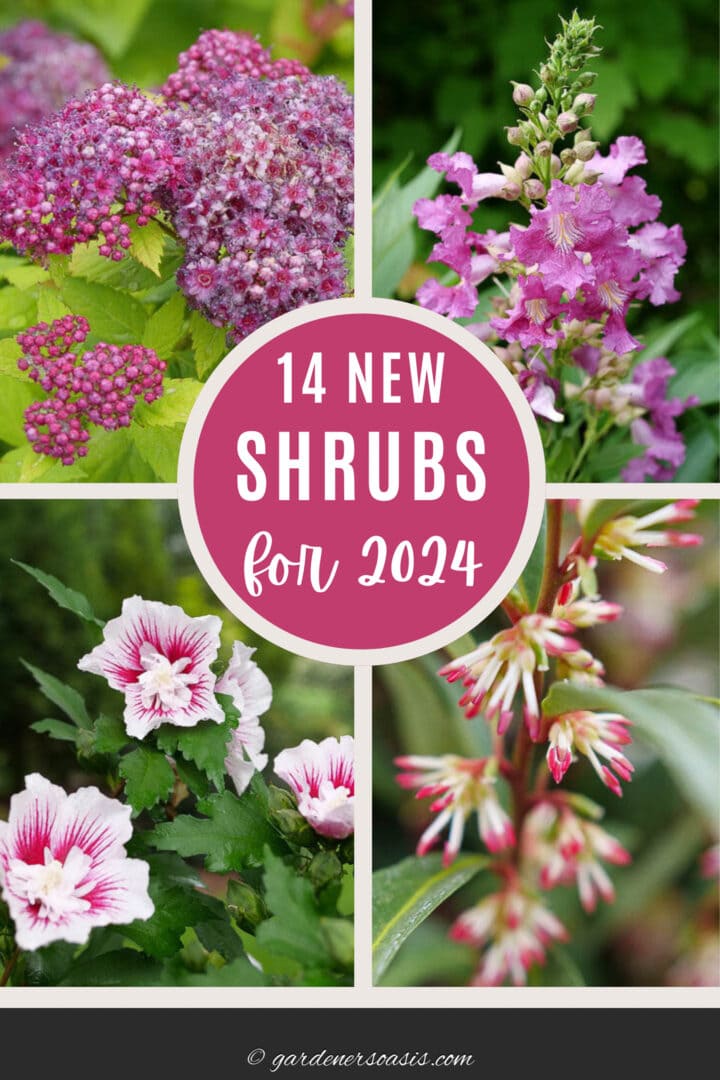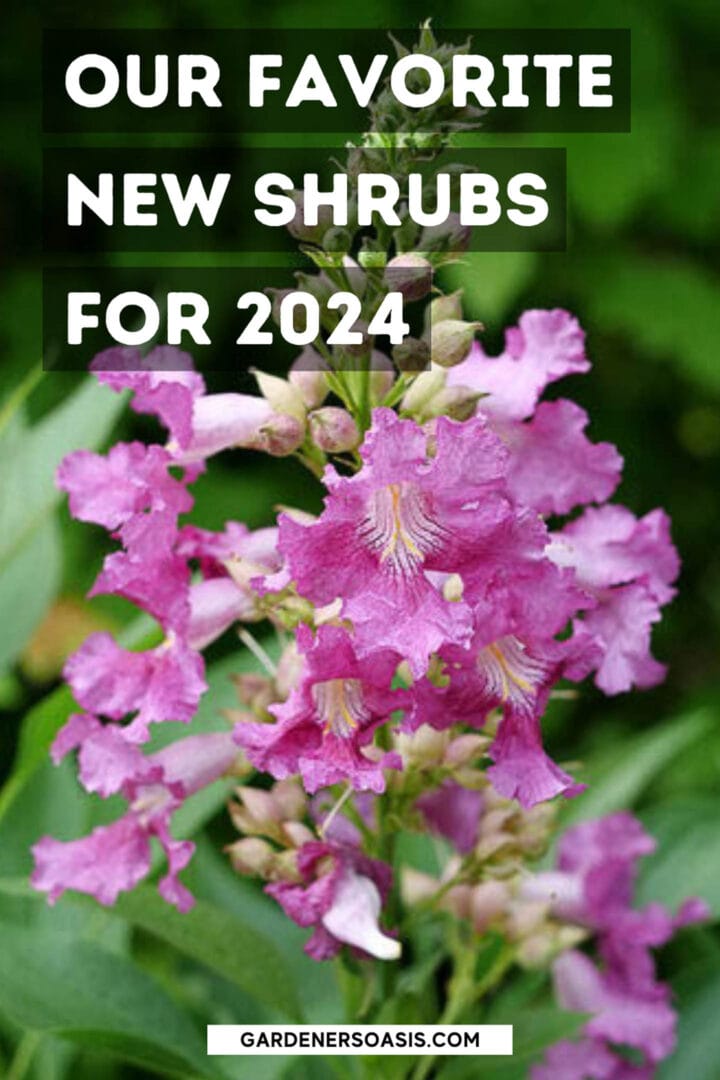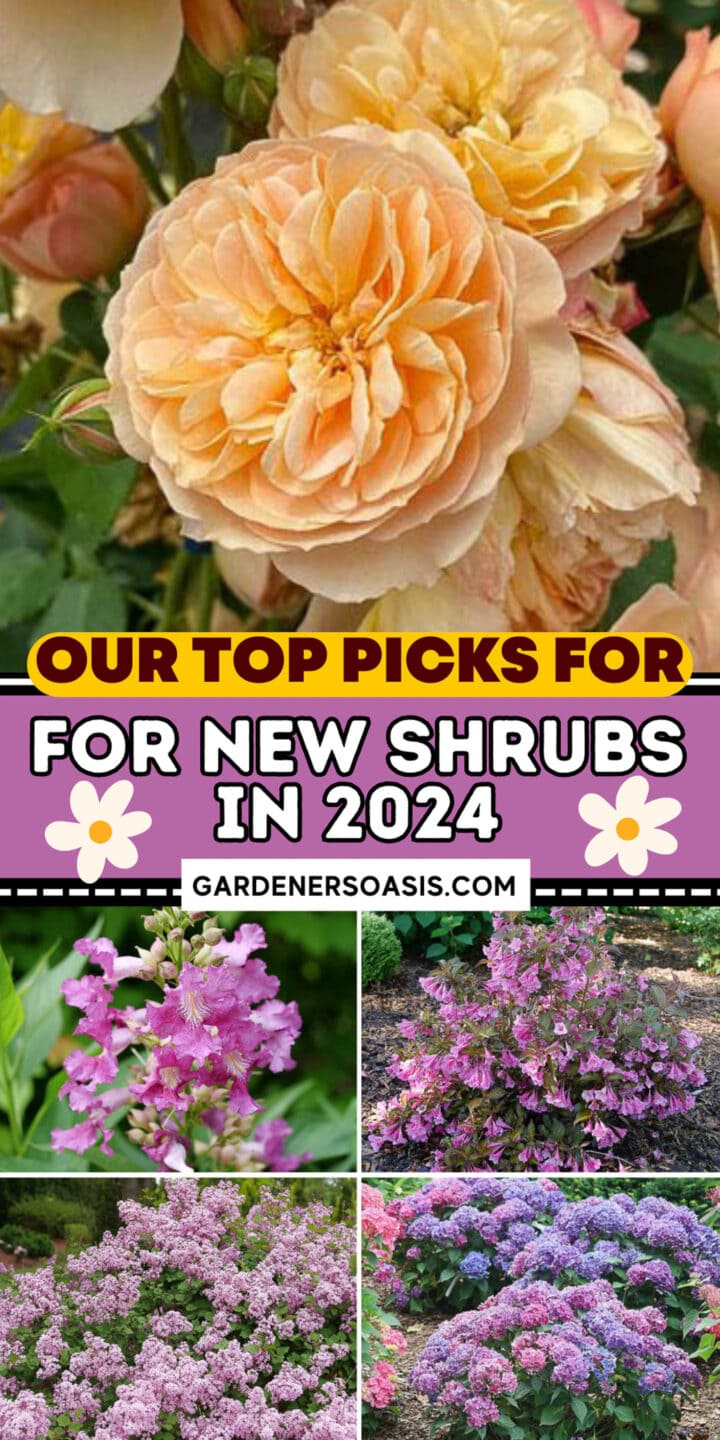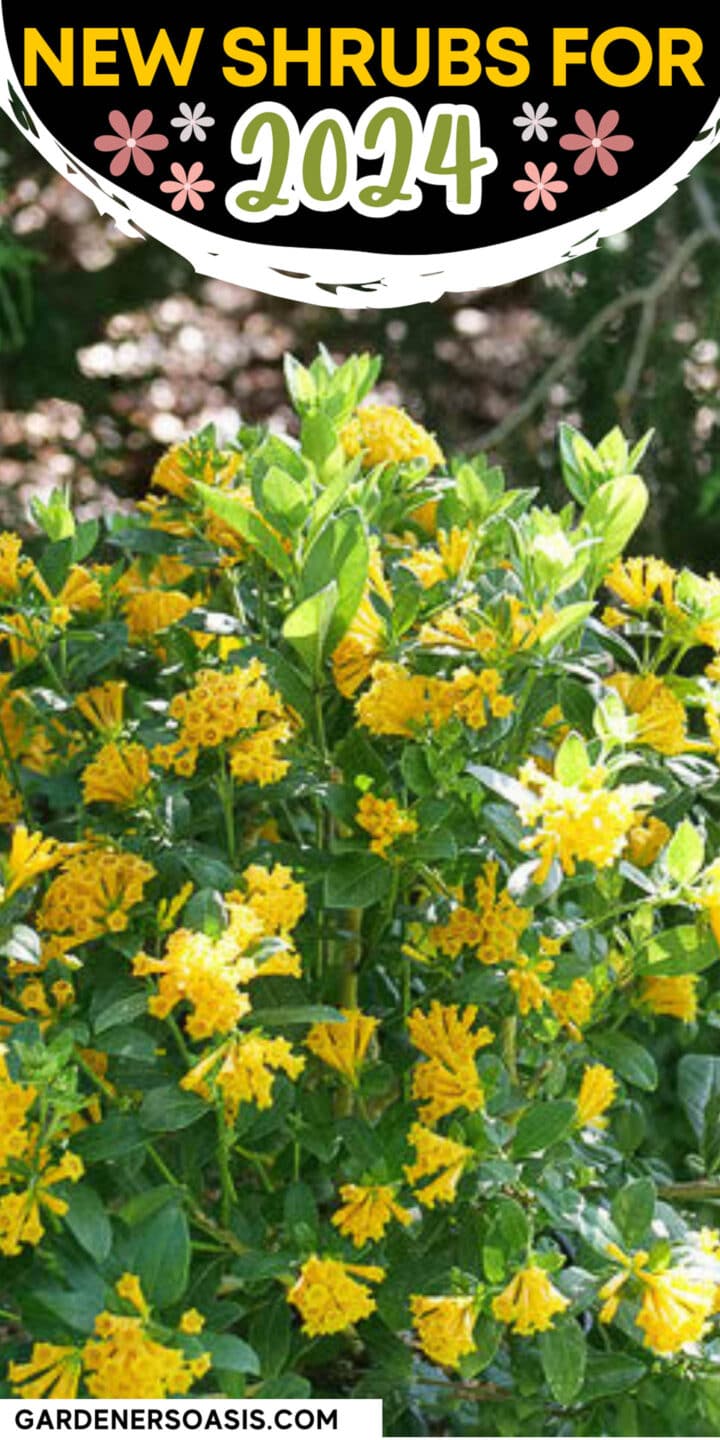Our Favorite New Shrubs For 2024
Get ready to learn about the best new shrubs for 2024. These selections are hybrids of old favorites that were developed to perform better, have different colored flowers and foliage, be hardier and generally make a good impression in the landscape.
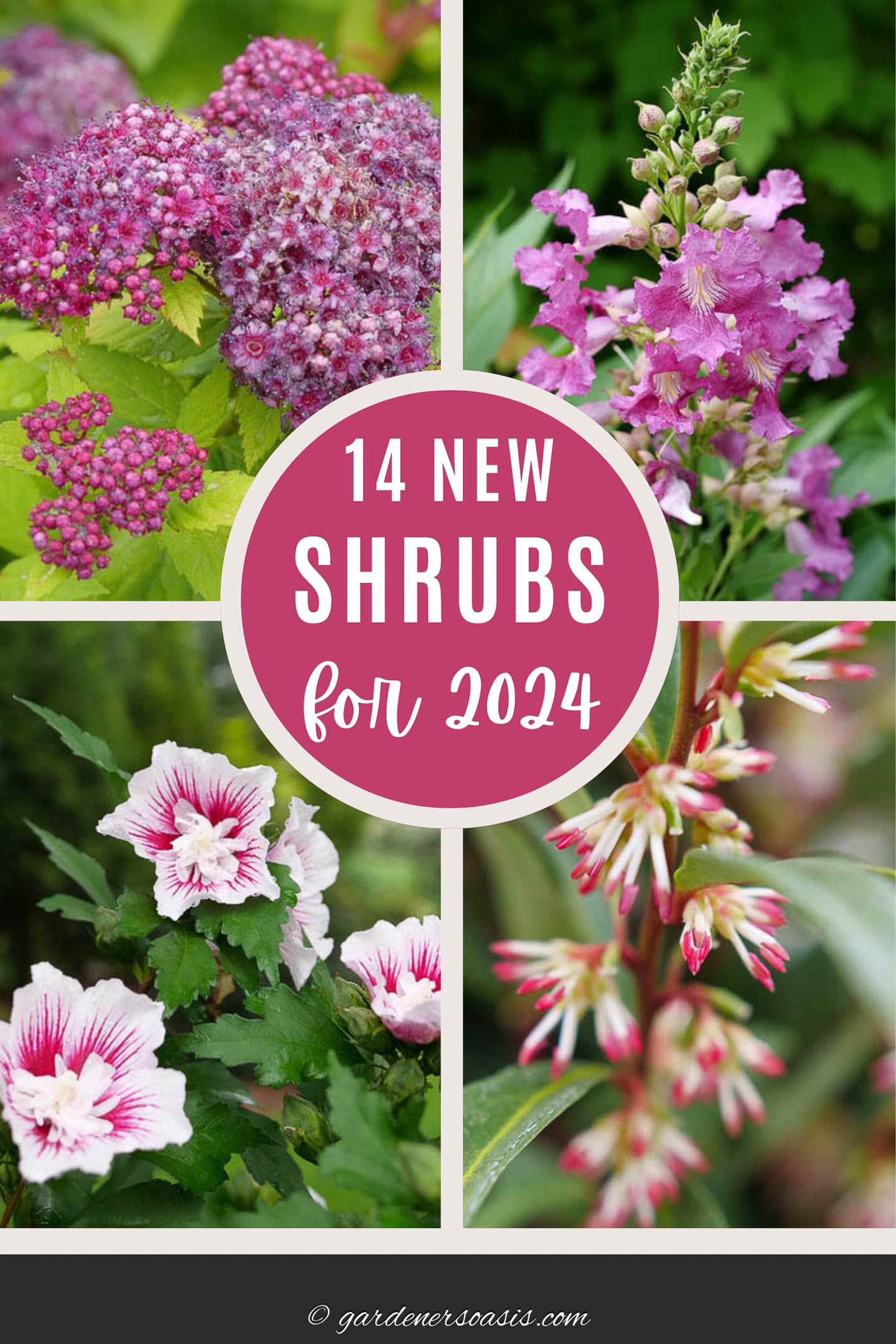
Shrubs are the backbone of the garden.
So every year I like to see what new varieties will be a great addition to my flower beds.
These are not brand new plants, but rather hybrids of existing ones that have been bred to be low maintenance, more disease resistant and resilient.
Not to mention their beautiful foliage and flowers that are often combined with longer blooming times and fabulous fragrance.
And for those of you with small yards, the new compact varieties are much easier to work with.
So let's get on with the list. Our top picks for the best shrubs of 2024.
1 | ‘El Nino'™ Desert Orchid
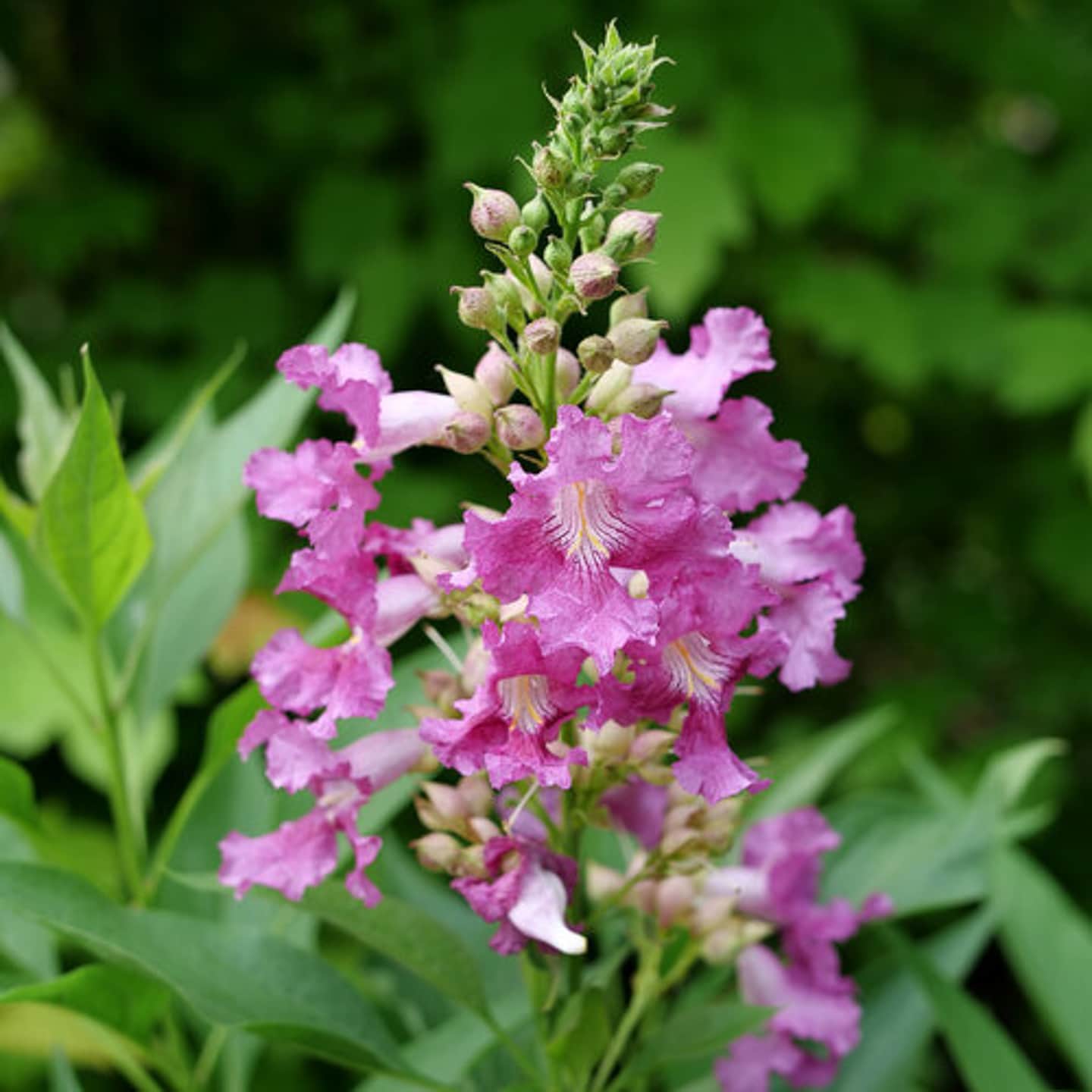
Scientific name: El Nino™ Chitalpa
Zone: 6 to 9
Exposure: sun to part shade
Height: 5′ to 8′
Width: 4′ to 6′
Bloom time: summer
Bloom color: purple
El Niño is a tough hybrid of 2 natives — desert willow and catalpa.
It has light green deciduous elongated leaves and gorgeous fragrant flower clusters that look like a combination of orchids and snapdragons.
The blooms emerge on old wood in late spring and then continue to flower on new wood sporadically throughout the summer.
This easy care compact shrub only needs a light pruning for shape in early spring and does well in average well drained soil. Deer are not interested.
2 | ‘Starblast Chiffon' Rose of Sharon
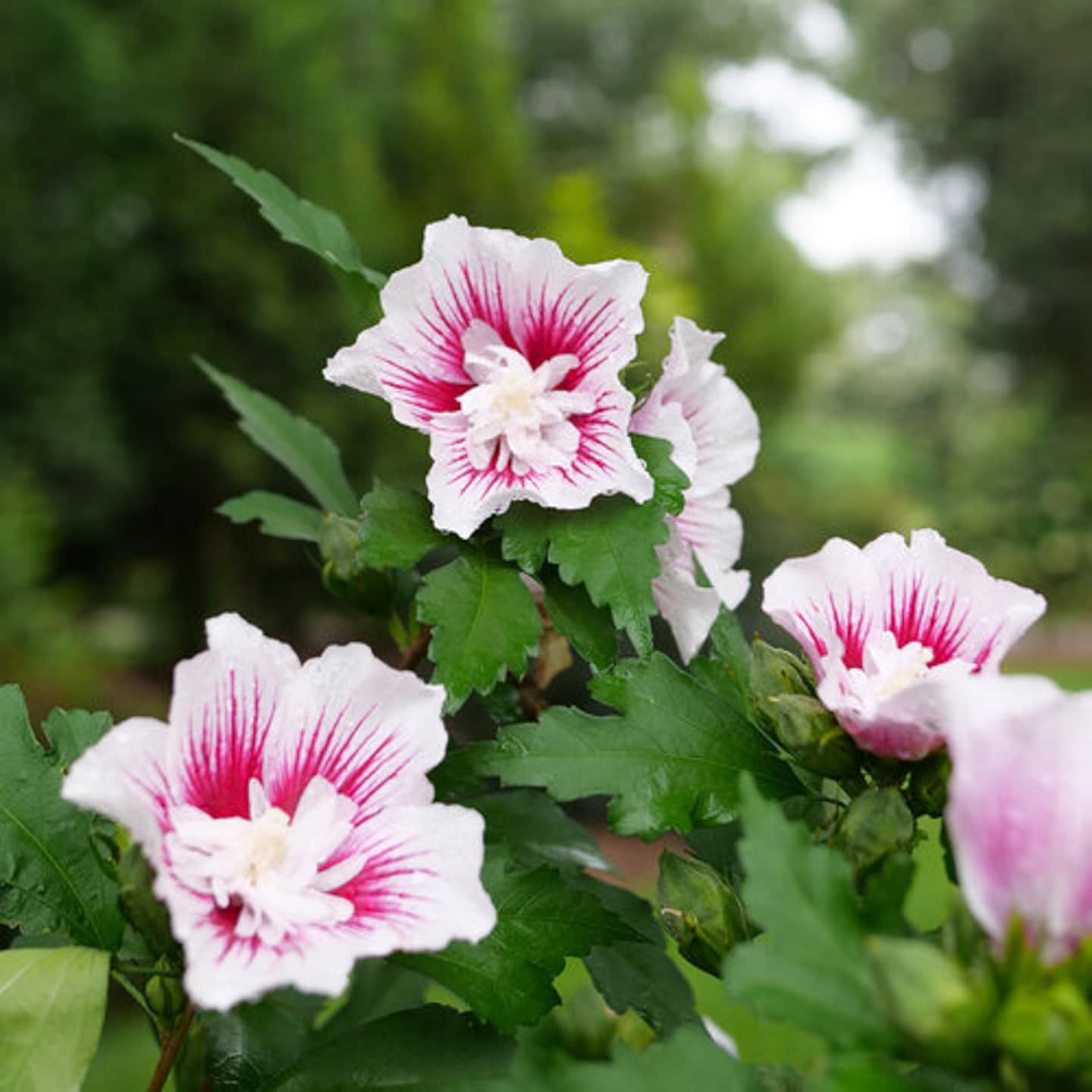
Scientific name: Starblast Chiffon™ Hibiscus syriacus
Zone: 5 to 9
Exposure: sun
Height: 8′ to 12′
Width: 5′ to 8′
Bloom time: summer
Bloom color: white with magenta starburst
If you have room for a tall, deciduous bush then Starblast Chiffon would be a spectacular introduction to your landscape.
Its spectacular tissue-like large white blooms have a white ruffle center that radiates a burst of magenta veins.
They appear earlier in the summer, last longer, and have a lower seed set than most Hibiscus varieties. (So you won't have to deal with the self-seeding issue that comes with some Hibiscus plants).
The beautiful flowers also attract butterflies and hummingbirds but not deer.
This easy care heat tolerant shrub needs no pruning
Note that it is slow to leaf out in the spring, so do not think it is dead.
3 | ‘Flavorette honey-apricot' rose
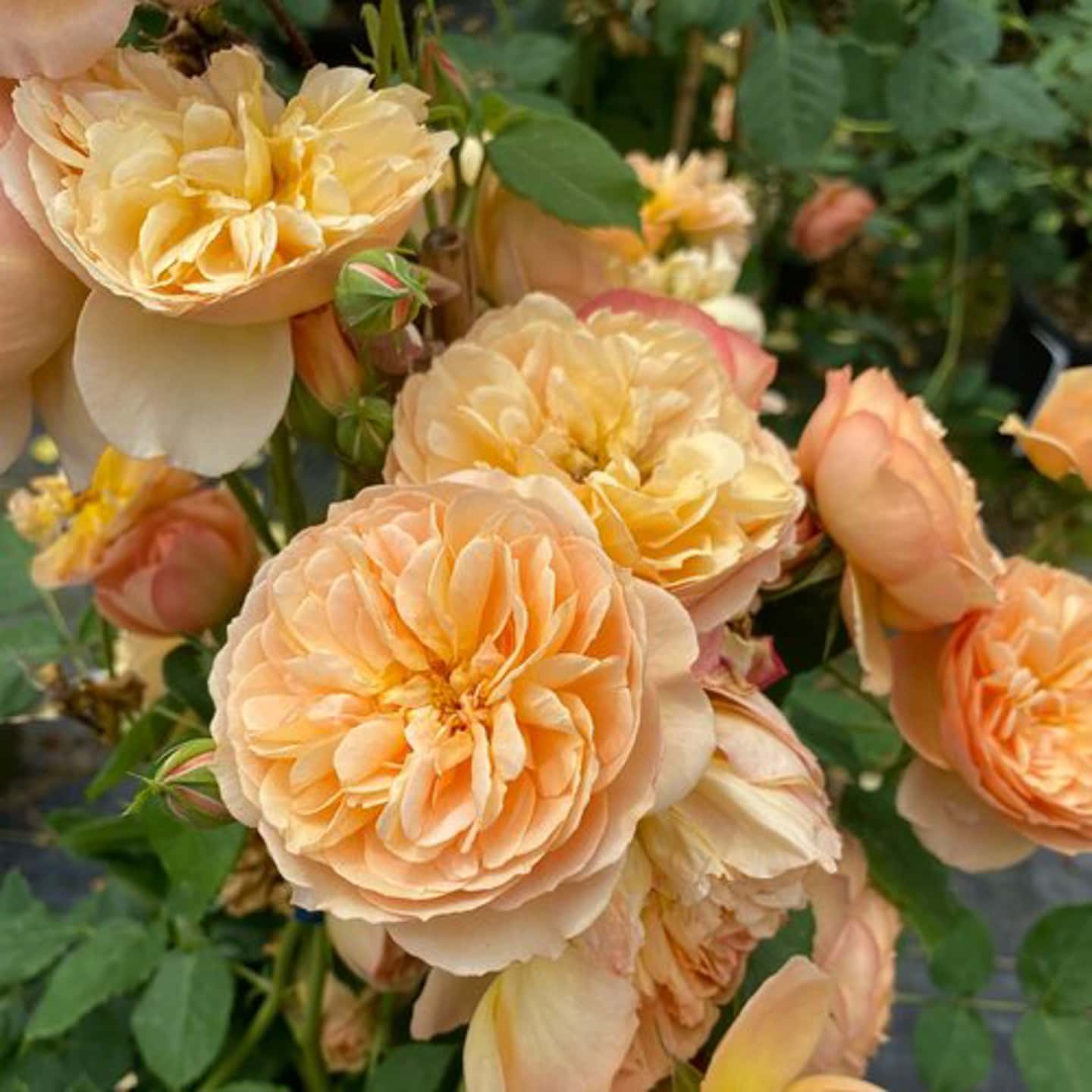
Scientific name: Flavorette™ Honey-Apricot Rosa x ‘Boznatafra'
Zone: 4 to 8
Exposure: sun
Height: 4′ to 8′
Width: 4′ to 8′
Bloom time: summer
Bloom color: orange
Flavorette Honey-Apricot rose is so named because its bowl-shaped, many petalled blossoms are edible.
Its dark green foliage makes a wonderful foil for the fragrant, apricot colored blossoms that recur all summer.
The blooms do not need dead heading in order to rebloom and make a nice cut flower.
The plant itself is highly disease resistant and can be grown in a mass planting, as a specimen, or in a container.
This deciduous rose should be planted in average well drained soil and pruned back by one-third in early spring.
Find out more about growing roses.
4 | ‘Sweet and Lo' sweet box
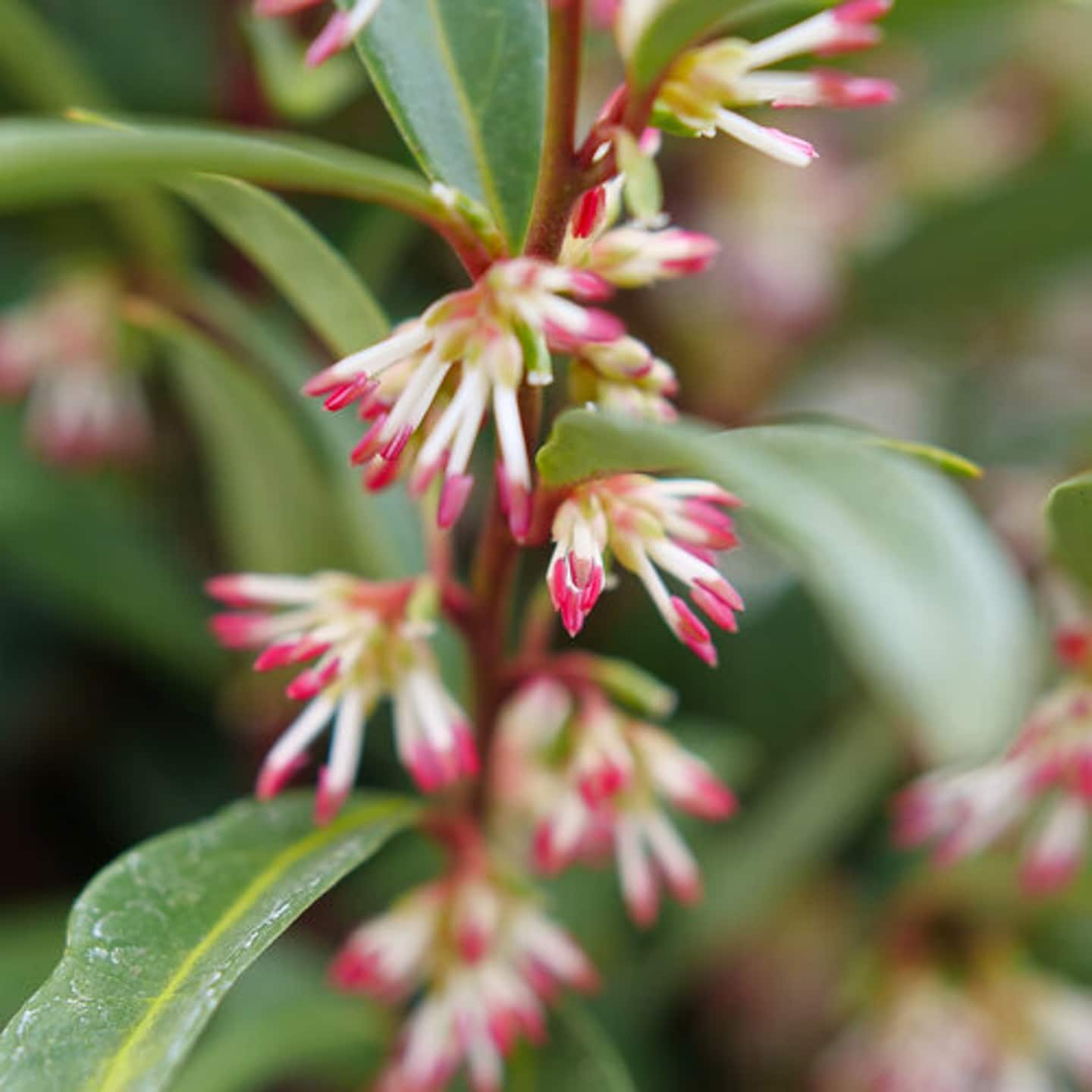
Scientific name: Sweet & Lo™ Sarcococca hookeriana ‘Purplerij1'
Zone: 5 to 9
Exposure: shade, part shade
Height: 1'6″ to 2'6″
Width: 3′ to 5′
Bloom time: late winter to early spring
Bloom color: white with fuchsia tips
Sweet and Lo sweet box is an evergreen compact little bush that is perfect to fill in those shady spots.
The shiny dark green leaves are attractive year round.
And the early blooming flower clusters are both pretty and fragrant.
The small fan-shaped white blooms are tipped in hot pink.
And the jasmine scent is an easy way to attract early pollinators to the garden.
Plant sweet box in acidic well drained, consistently moist soil.
The roots have a light suckering habit which can be managed by pruning in spring after the flowers are spent.
‘Sweet and Lo' makes an ideal groundcover.
5 | ‘Just Chill Red Tip' Camellia
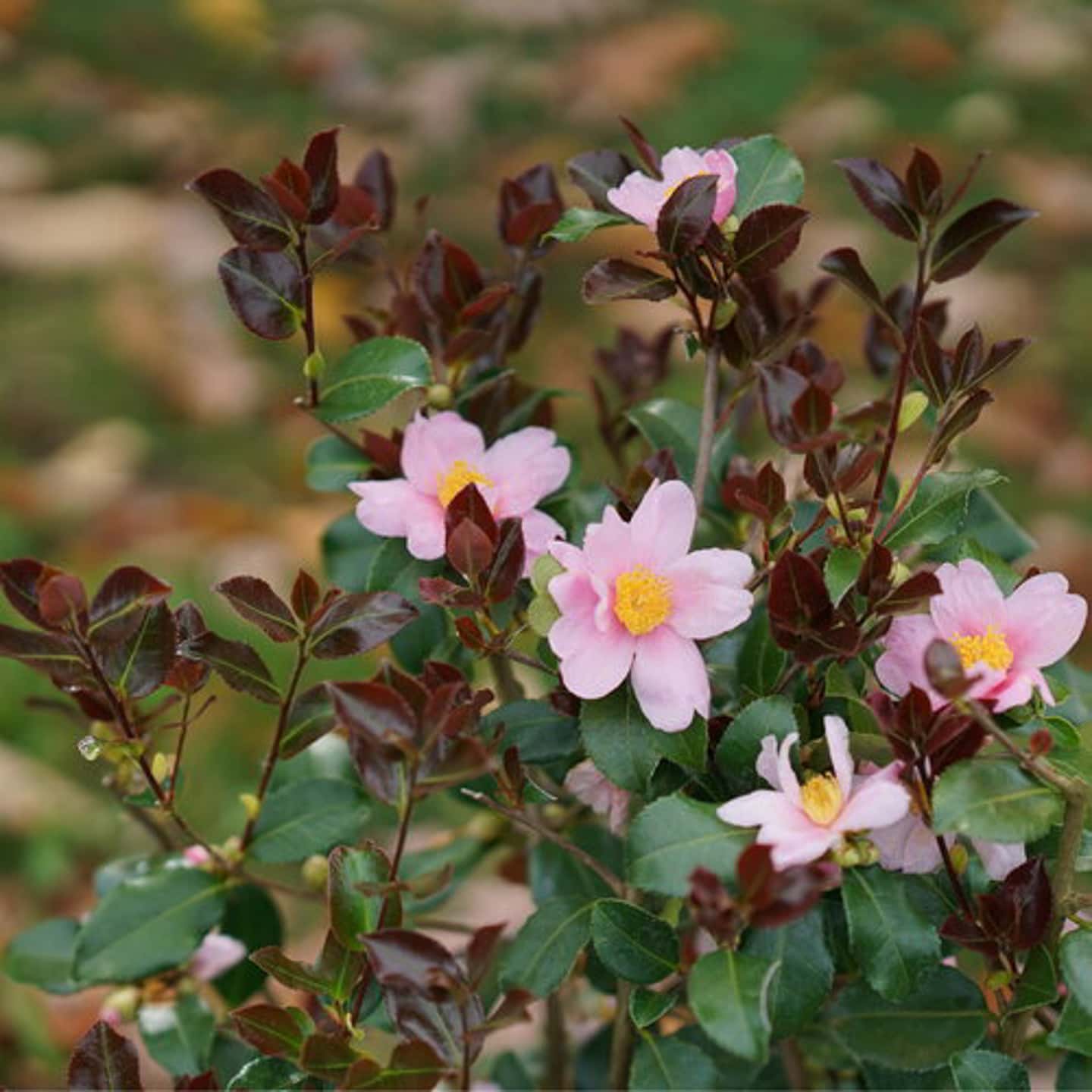
Scientific name: Camellia x ‘FARROWCJRF'
Zone: 6 to 9
Exposure: part sun to sun
Height: 5′ to 8′
Width: 5′ to 6′
Bloom time: mid-fall to winter
Flower color: pink
The Just Chill Red Tip Camellia brings a vibrant touch to landscapes all year long.
It starts with burgundy-colored new growth that provides contrast with the shiny, dark evergreen mature foliage.
Then as the seasons shift, this plant offers a splash of color just when most gardens need it most.
Its pink anemone-like ruffled flowers bloom from mid-fall to winter when few other plants do. (And they're fragrant, too!)
This Camellia thrives in various light conditions and requires well-draining, moist soil.
Find out more about growing Camellias.
6 | ‘Double Play Dolly'® Spirea
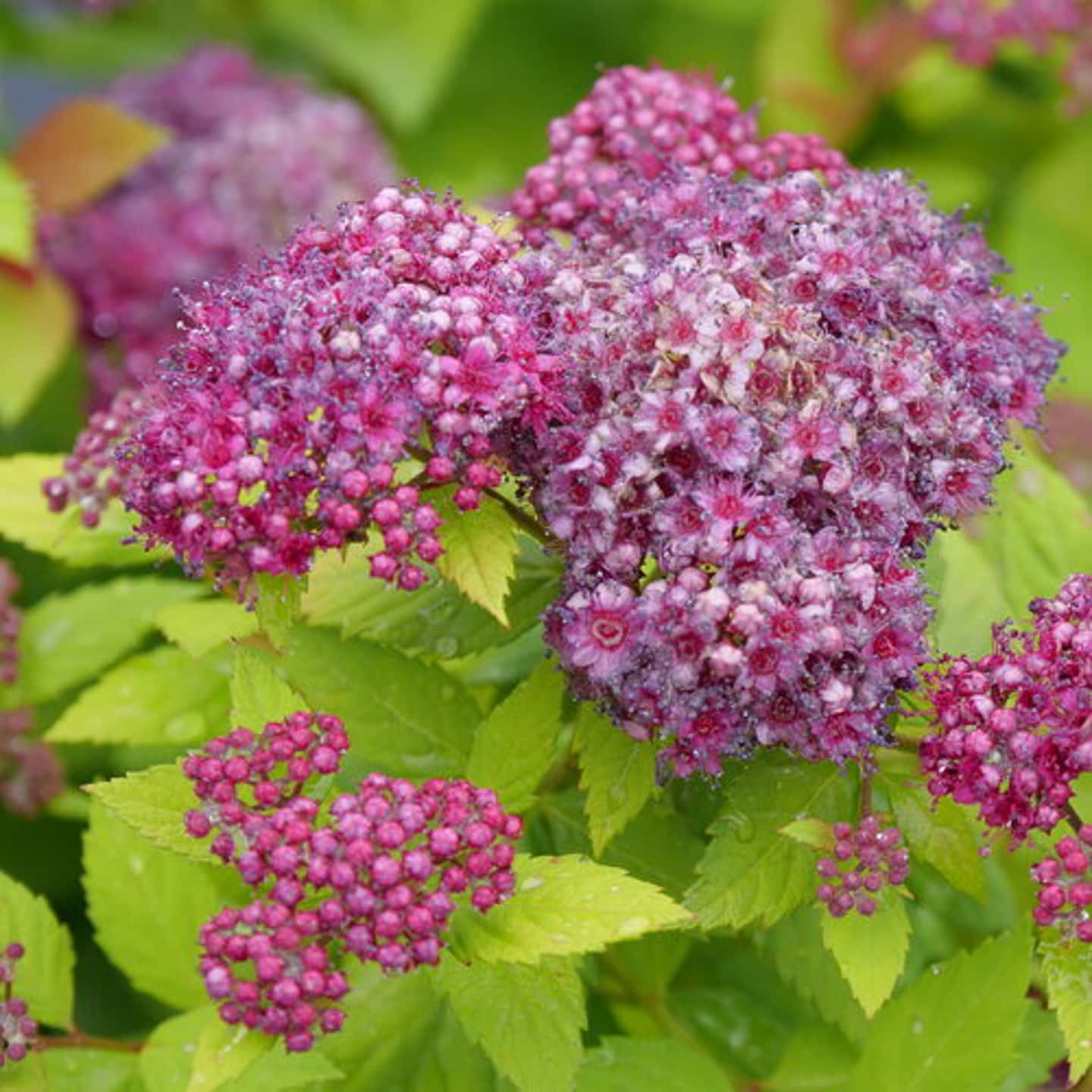
Scientific name: Spiraea x ‘SMNSJSA'
Zone: 3 to 8
Exposure: part sun to sun
Height: 18″ to 30″
Width: 18″ to 30″
Bloom time: late spring
Flower color: purple
Double Play Dolly is a reblooming spirea variety that really makes a statement in the garden.
It starts with orange-red foliage in the spring which turns to chartreuse as it matures.
This provides a showstopping backdrop for the electric purple blooms that arrive in late spring.
It also has a compact, mounded shape, making it a perfect choice for edging, accent planting, or as a companion in perennial gardens.
While deadheading isn't necessary, giving it a light trim after its spring bloom will cause more of the new growth red foliage to appear.
7 | ‘Juiced® Orange' Jessamine
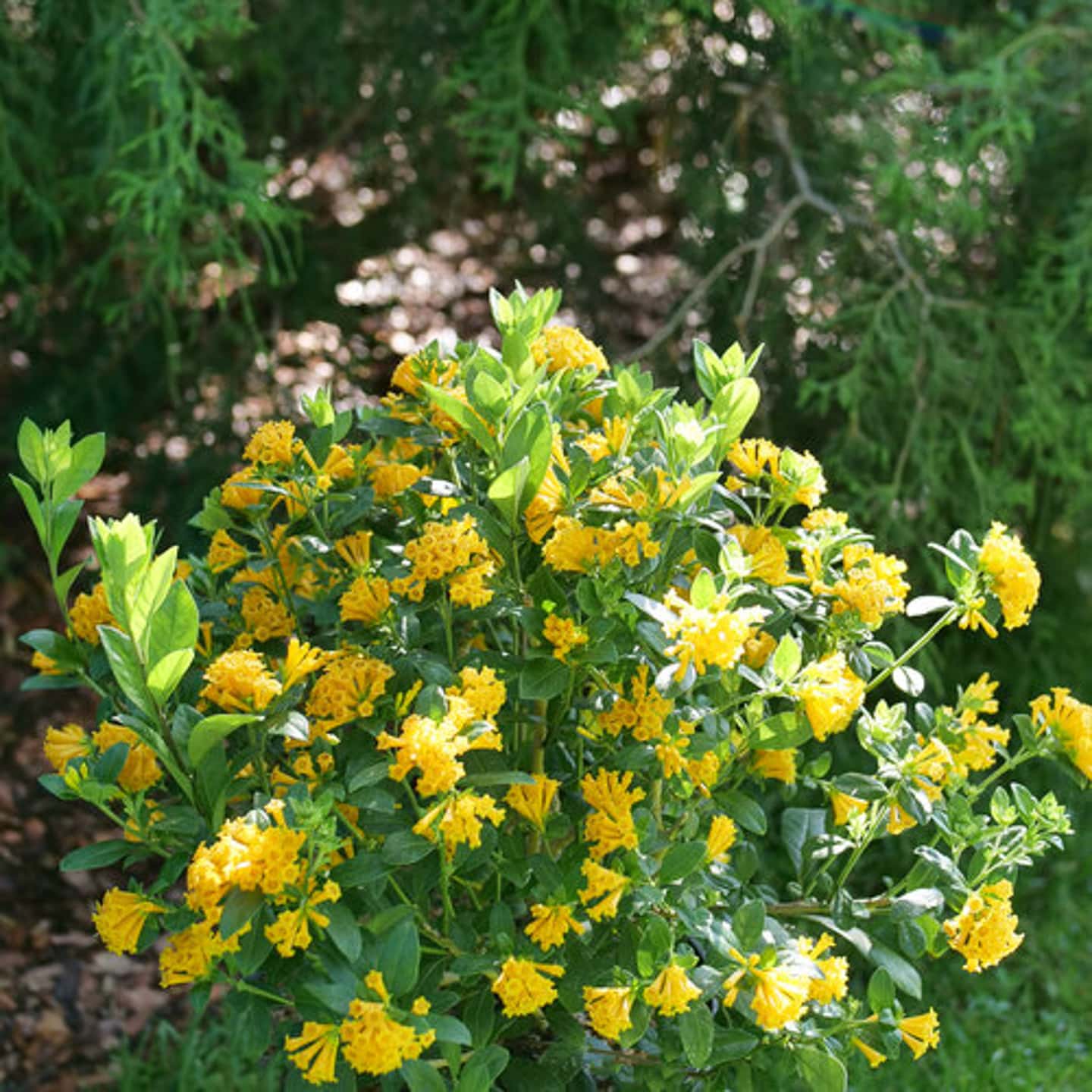
Scientific name: Cestrum corymbosum
Zone: 7 to 10
Exposure: sun to part shade
Height: 4′ to 5′
Width: 3′ to 4′
Bloom time: spring to summer
Bloom color: yellow/orange
Jessamine is another delightfully aromatic compact shrub that broadcasts its scent throughout the garden.
This long blooming evergreen plant is covered with masses of bright tubular flowers that attract bees, butterflies and hummingbirds.
Once established in average, well drained soil, it is deer resistant, and heat and drought tolerant.
It blooms on old wood but can take a light pruning for shape in early spring as the new growth begins to emerge.
If I lived in a warmer climate I would definitely be adding ‘Juiced Orange' to my pollinator garden.
8 | ‘Mucho Gusto' Abelia
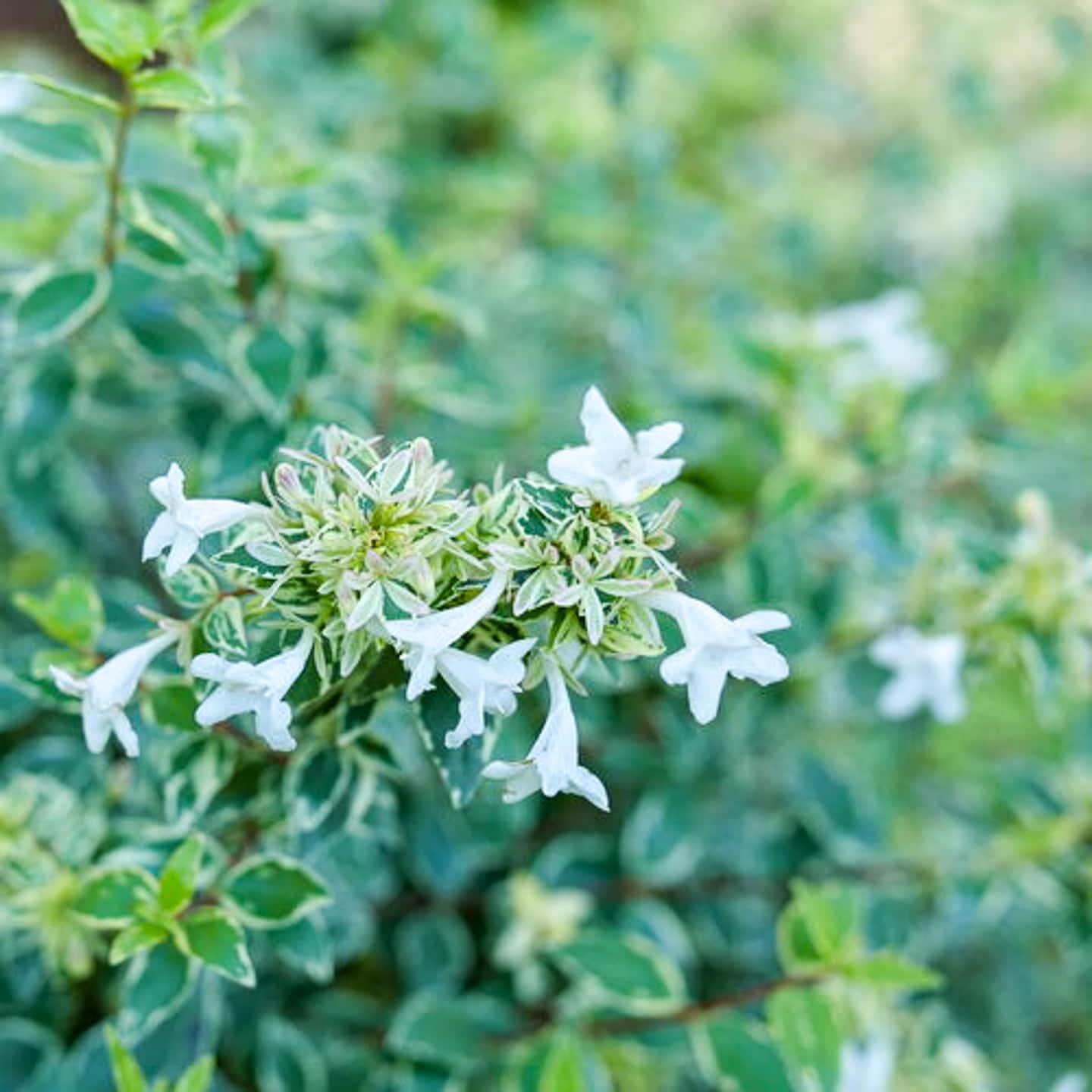
Scientific name: Abelia Grandifolia ‘Mucho Gusto'
Zone: 6 to 9
Exposure: sun to part shade
Height: 2′ to 3′ 6″
Width: 3′ to 5′
Bloom time: summer
Bloom color: white
‘Mucho Gusto' Abelia is an attractive, very easy care, deciduous shrub with variegated white-edged green leaves.
Its small white fragrant flowers appear in summer and will perfume the area where it is planted.
This medium sized shrub has an attractive mounding habit that only needs a light pruning for shape in early spring.
Average well drained soil will support the extensive root system, as well as its fast growth.
It attracts bees and butterflies.
9 | ‘Pillow Talk' Gardenia
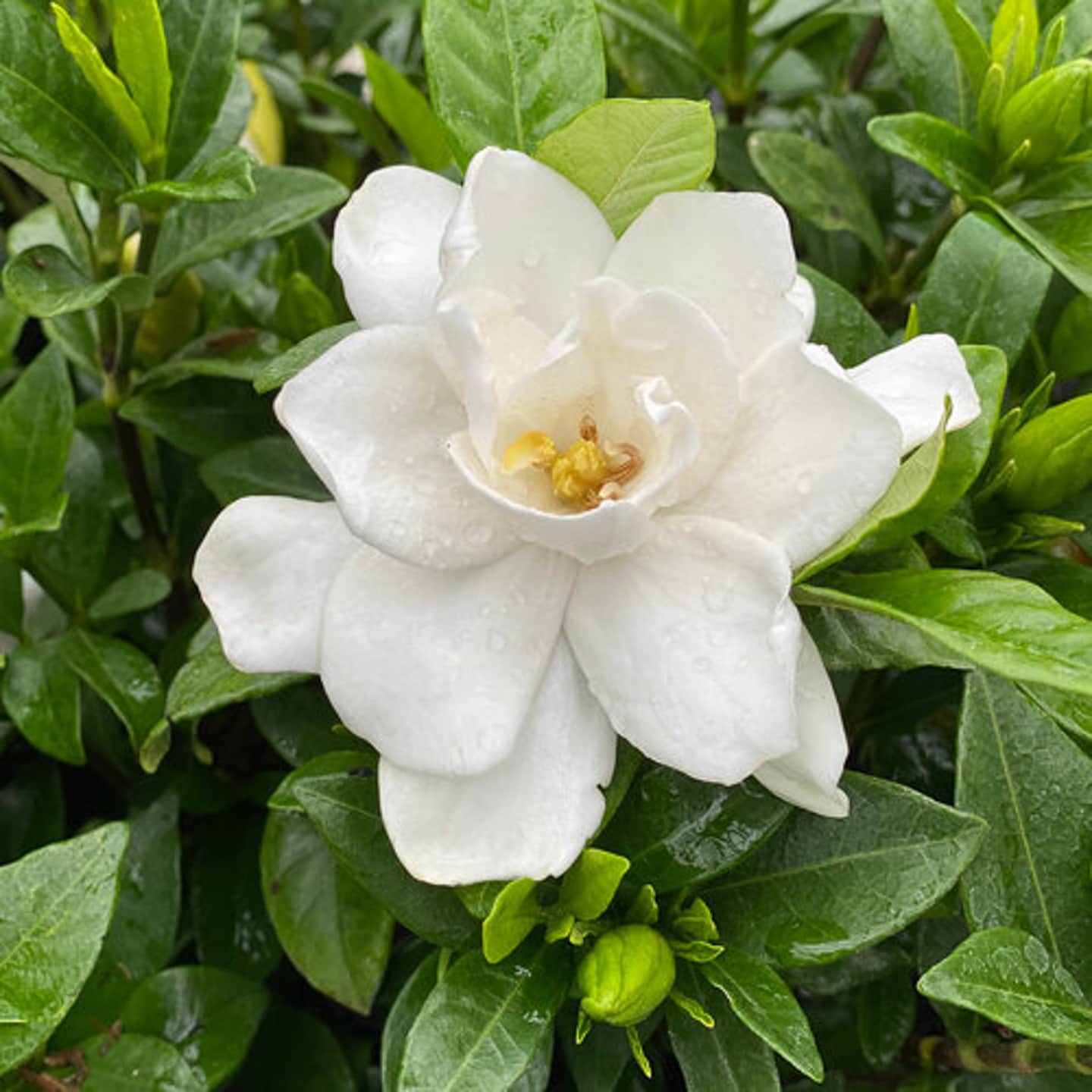
Scientific name: Pillow Talk® Gardenia jasminoides
Zone: 7 to 10
Exposure: sun to part shade
Height: 2'6″ to 3′ 6″
Width: 3′ to 4′
Bloom time: spring
Bloom color: white
‘Pillow talk' is one of the easiest gardenias to grow and is perfect for small gardens and containers, given its compact size.
Plant this attractive evergreen compact shrub in fertile, well draining acidic soil and you will be rewarded with masses of fragrant large thick petalled flowers in spring.
Place it front of the border to enjoy its low mounding 4 season interest and spicy fragrance.
Deer and rabbits do not like the waxy dark green shiny leaves. No pruning is necessary except to remove dead bits and spent flowers.
10 | Hydrangea ‘Let’s Dance Sky View’
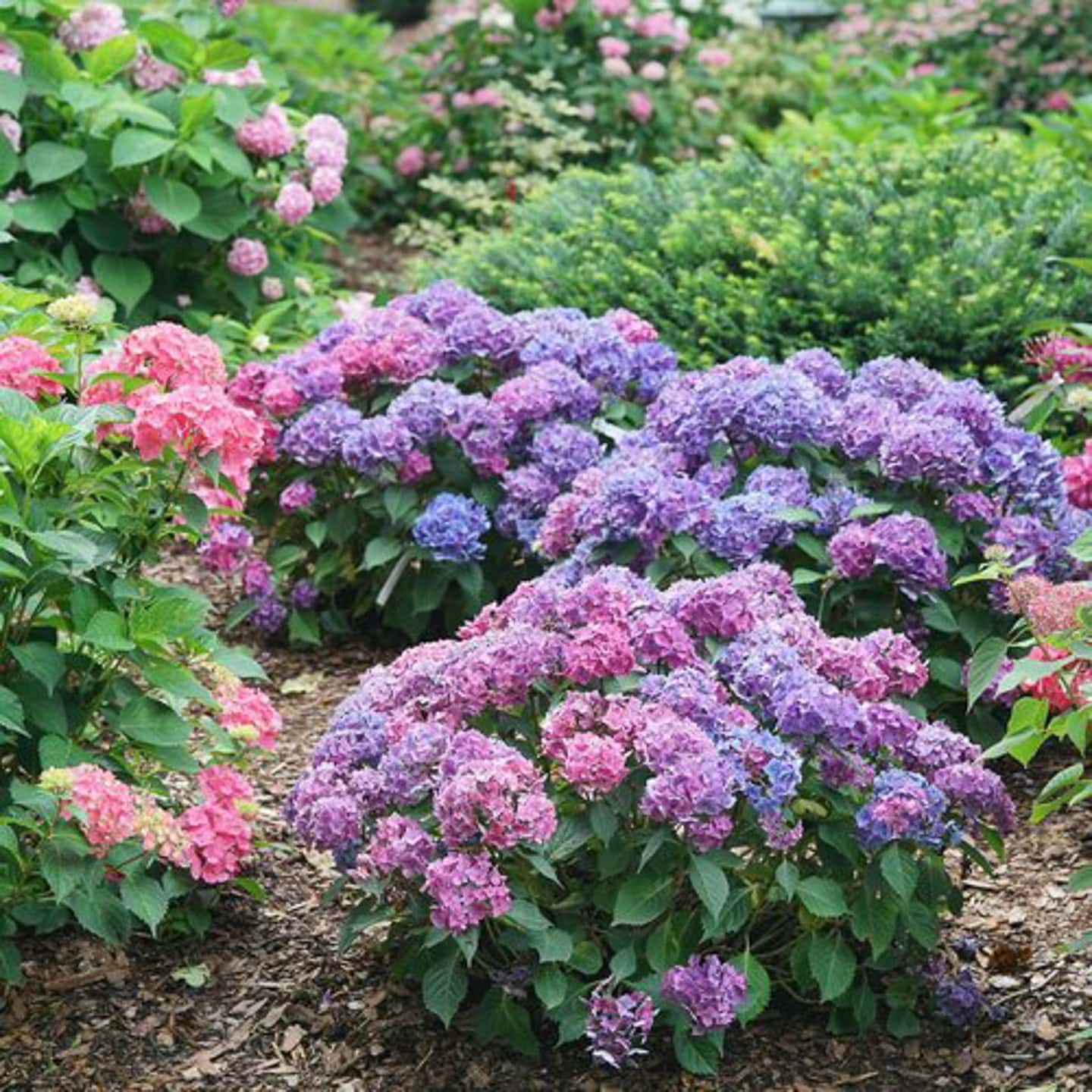
Scientific name: Let's Dance Sky View® Hydrangea macrophylla × serrata
Zone: 4 to 9
Exposure: sun to part sun
Height: 2′ to 3′
Width: 3′ to 4′
Bloom time: summer to fall
Bloom color: pink or blue depending on the soil acidity
The Let's Dance Hydrangea series is bred to conserve its buds on old wood during spring frosts, as well as to continue to bloom on new wood all summer.
The ‘Sky view' variety is remarkably easy to turn blue — just add aluminum sulphate to the soil when planting.
It does well in many growing zones throughout the country, from Michigan to Florida.
And its compact size and prolific blooms make it a good container plant.
This large leafed deciduous plant is low maintenance. No pruning required, but regular watering and planting in well drained soil is necessary.
Find some companion plants for Hydrangeas.
11 | Hydrangea ‘Pinky Winky Prime'
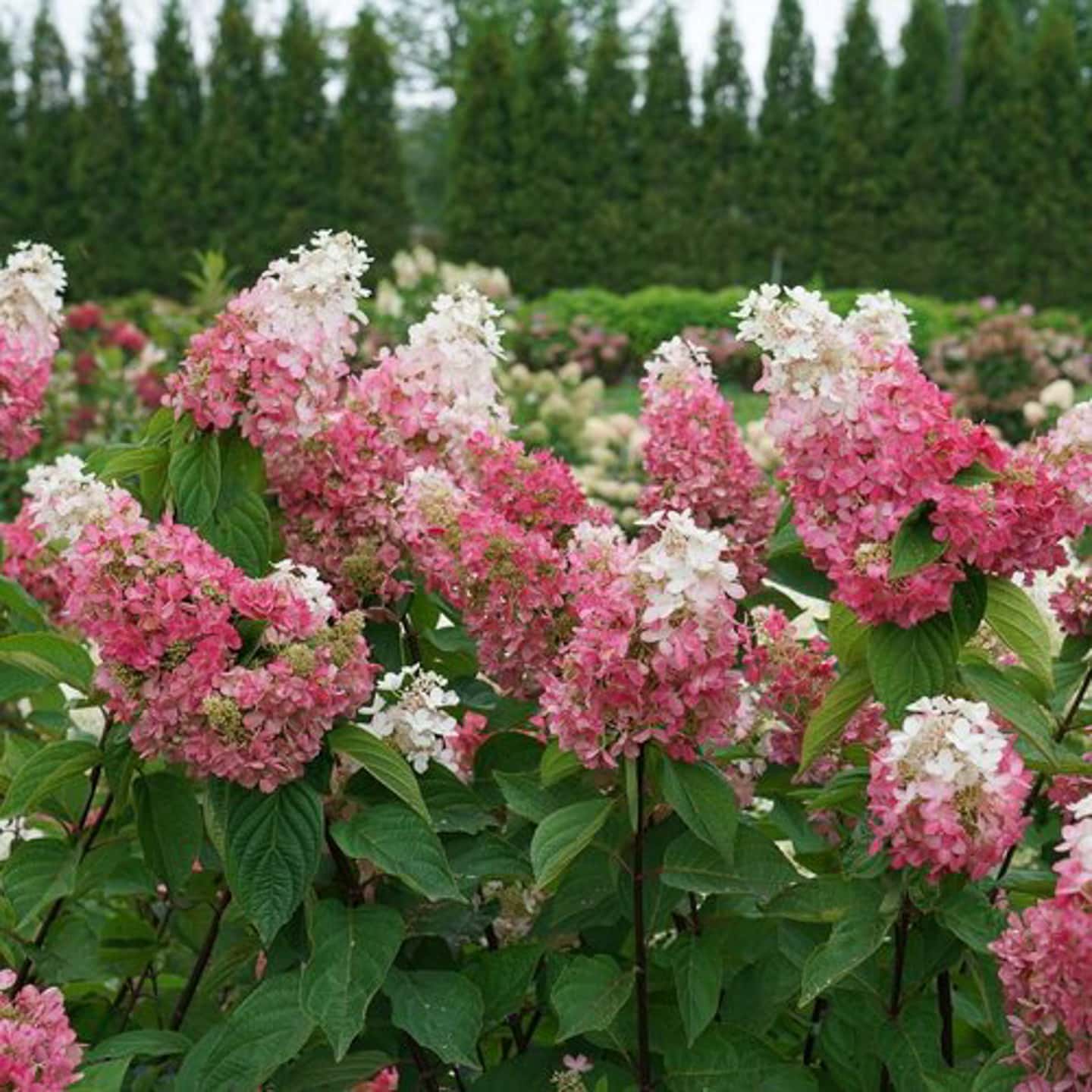
Scientific name: Pinky Winky Prime® Hydrangea paniculata
Zone: 3 to 8
Exposure: sun to part shade
Height: 6′ to 9′
Width: 6′ to 9′
Bloom time: mid summer to early fall
Bloom color: white turns to deep rose pink
Another one of the new Hydrangeas for 2024, is Pinky Winky Prime.
Choose it if you want a spectacular display of large blooms in late summer and fall, and you have the space to accommodate its large size.
It has a profuse number of large flowers that can reach 16 inches in length.
They start out pure white and gradually turn a deep rose/red as the season progresses. The tips continue to grow white, giving you a large rosy panicle with white ends.
Which make beautiful cut flowers for an indoor bouquet.
Plant in rich, loamy well drained soil and give average moisture. Prune in late winter and fertilize with a slow release fertilizer meant for trees and shrubs.
12 | ‘Bloomerang Purpink'® lilac
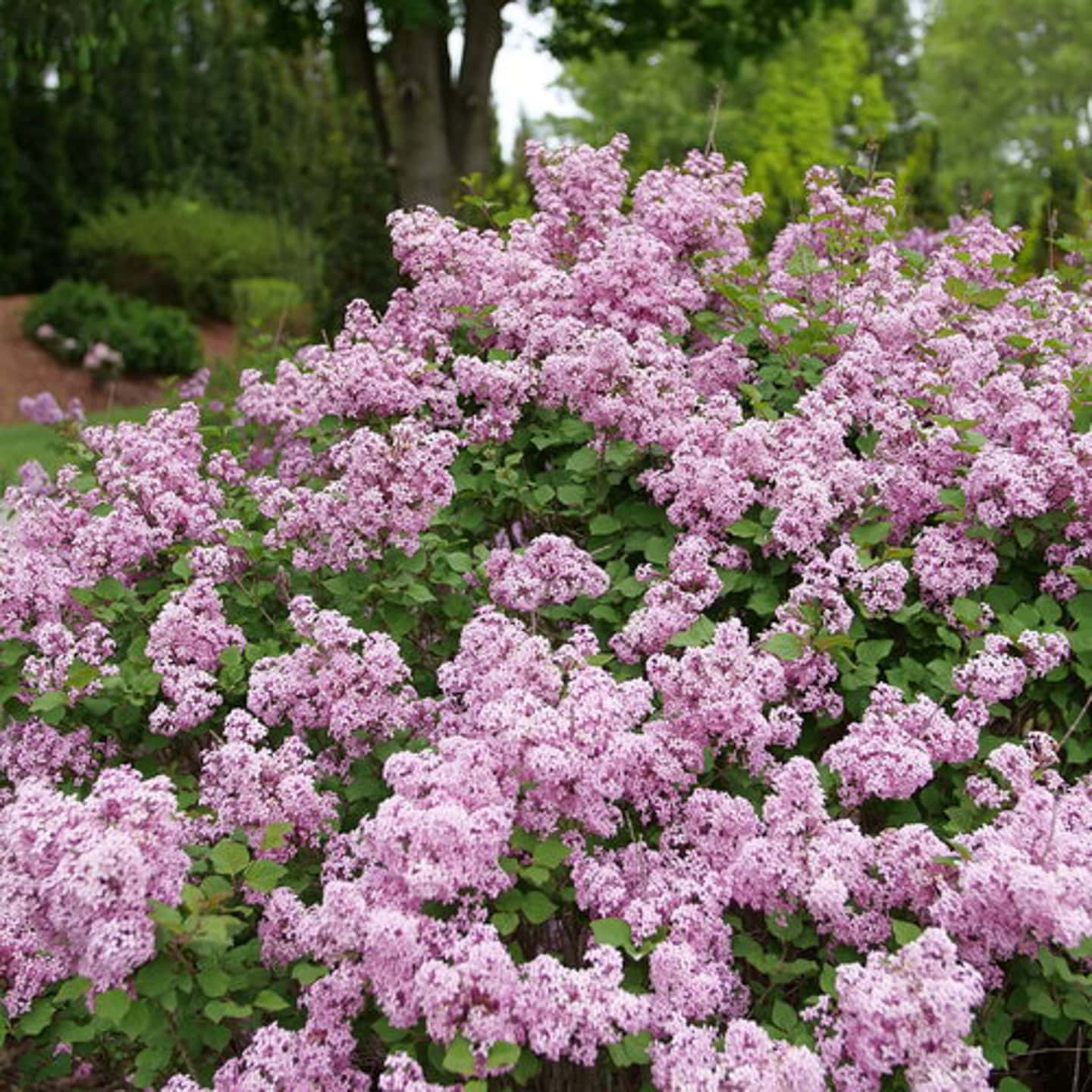
Scientific name: Bloomerang Purpink® Syringa x pubescens
Zone: 3 to 7
Exposure: sun
Height: 3′ to 5′
Width: 2′ to 3′
Bloom time: spring to fall
Bloom color: purple/lavender/pink
To date I have found the reblooming characteristics of the Bloomerang Lilac series disappointing.
However, I have added ‘Purpink' to my list because Proven Winners named it one of 5 top picks for new 2024 shrubs. So I'm hoping for better results with this variety.
This deciduous compact rounded small shrub has the classic lilac scent, lots of blooms in 3 seasons, and superior disease resistance.
And the purplish-pink blossom color is an attention getter.
Syringa ‘Bloomerang purpink' likes alkaline or neutral soil with very good drainage.
It does not need pruning to rebloom as it does so on new growth. If you must prune, do so immediately after the first flush of spring blooms have died so you don't cut off the reblooms.
For best results, it should be planted in full sun, given regular watering in the spring, and covered with a good layer of mulch.
Find out more about growing lilacs.
13 | Weigela ‘Sonic bloom wine'
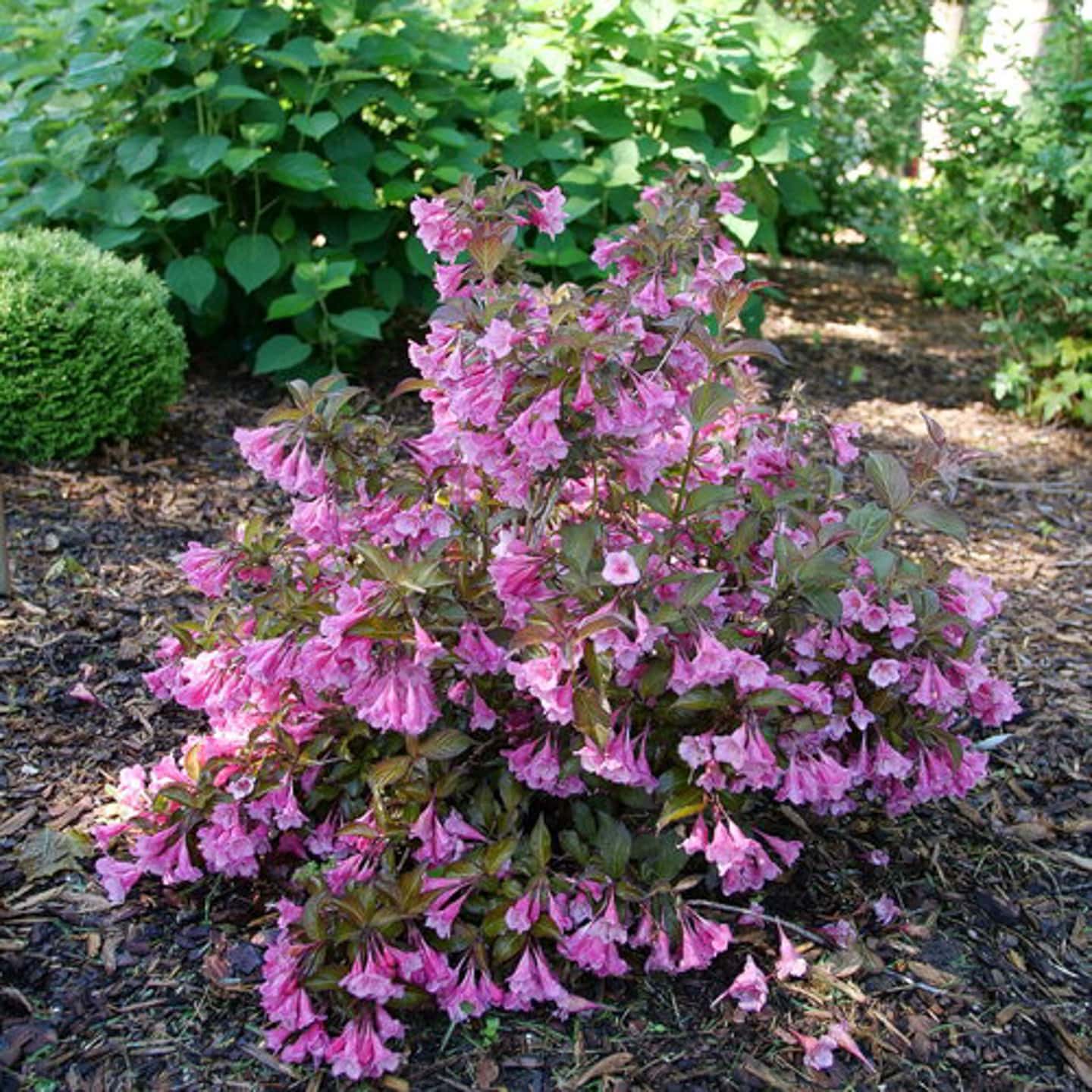
Scientific name: Sonic Bloom® Wine Weigela florida
Zone: 4 to 8
Exposure: sun
Height: 4′ to 5′
Width: 3′ to 4′
Bloom time: spring to summer
Bloom color: pink
Sonic Bloom Wine is a reblooming Weigela known for its stunning burgundy/green foliage and prolific pink flowers.
It is an easy care plant that doesn't need pruning. But if you must prune do so immediately after the first bloom time to prevent cutting off the next flush of flowers.
Bees, butterflies, and hummingbirds love it. Deer not so much.
For the best results, plant in sunny borders or containers, in well drained soil. And fertilize in early spring with a granular fertilizer formulated for trees and shrubs.
14 | ‘Double Take Eternal White'® Quince
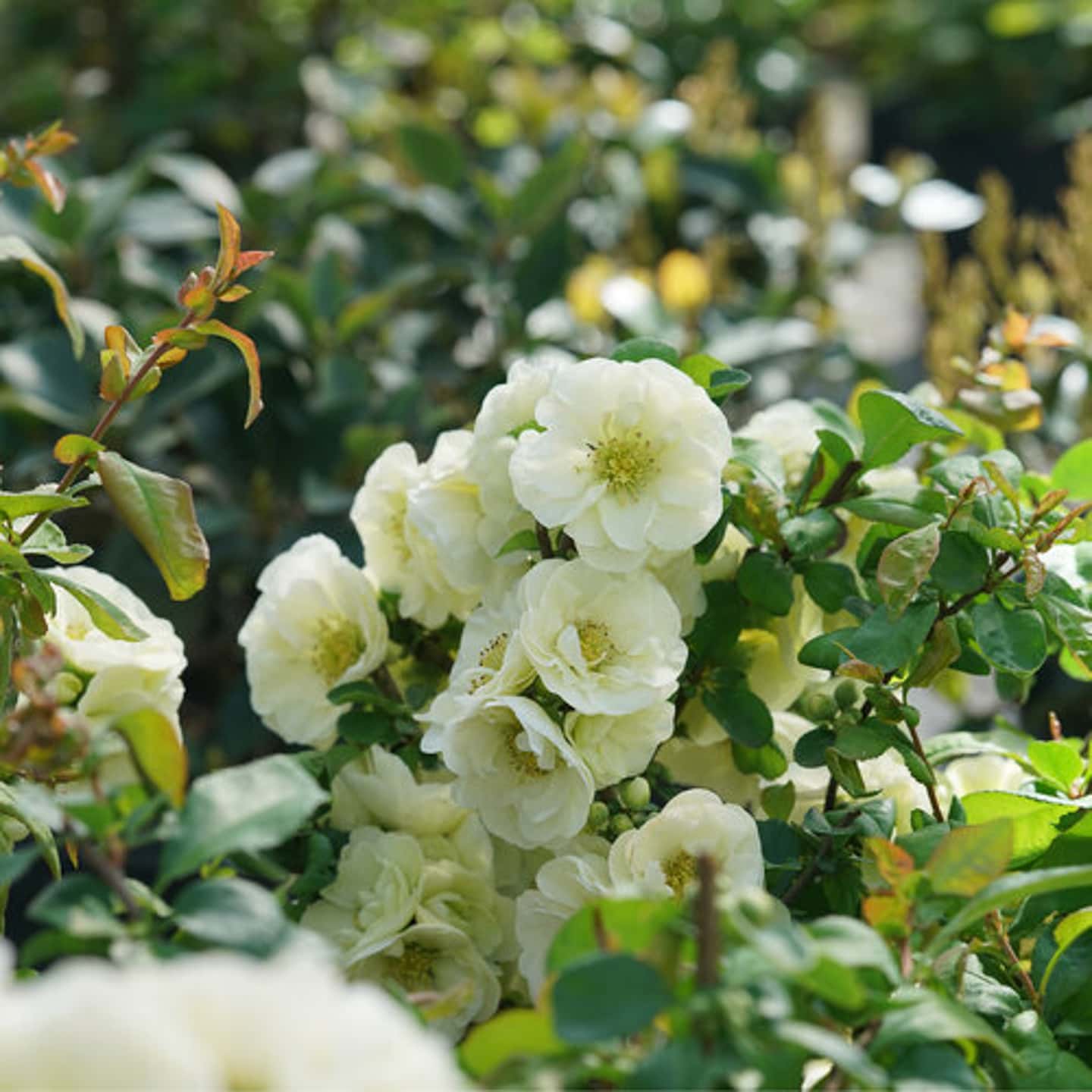
Scientific name: Chaenomeles speciosa
Zone: 5 to 9
Exposure: part sun to sun
Height: 2′ to 4′
Width: 4′ to 5′
Bloom time: spring to summer
Flower color: white
The Double Take Eternal White quince stands out with its abundant creamy white double flowers that grace the plant from mid-spring to early summer. A very long bloom time compared to other quince varieties!
Its compact growth makes it ideal for cut flower gardens and border plantings, while also being a great choice for hedging and mass planting.
This quince is a low-maintenance addition to any garden. It only requires a springtime application of controlled-release fertilizer and pruning to shape it after it flowers.
That's it for our favorite new bushes of 2024. Hopefully you've found a few varieties that will be finding a home in your garden.
Other plants you might like
Or browse all of our shrub and tree ideas.
Have comments or questions on our favorite new shrubs for 2024? Tell us in the section below.
This post was originally published on February 28, 2024 but was updated with new content on November 23, 2024.

